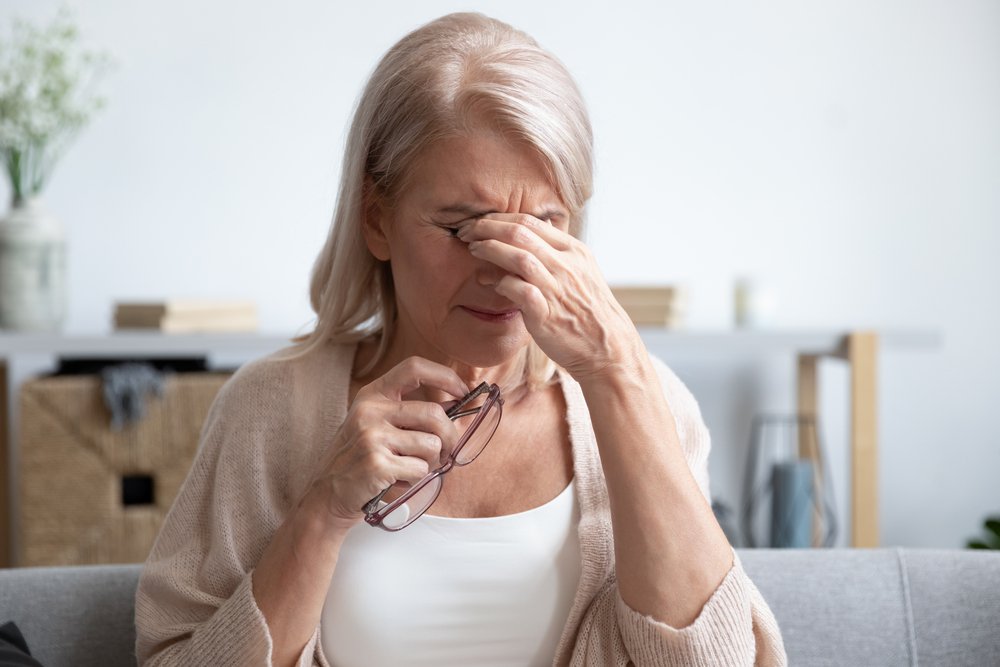 Are you constantly rubbing your eyes, experiencing stinging and itching, or dealing with increased sensitivity to light? You might be dealing with dry eye syndrome. But what if your itchy eyes are actually a result of blepharitis, a condition that shares similar symptoms? Fortunately, both dry eye and blepharitis can be treated without any downtime using the same cutting-edge technique: low-level light treatment.
Are you constantly rubbing your eyes, experiencing stinging and itching, or dealing with increased sensitivity to light? You might be dealing with dry eye syndrome. But what if your itchy eyes are actually a result of blepharitis, a condition that shares similar symptoms? Fortunately, both dry eye and blepharitis can be treated without any downtime using the same cutting-edge technique: low-level light treatment.
Low-level light treatment is a non-invasive, painless procedure used to stimulate tear production and manage symptoms of dry eye and blepharitis. In this post, we'll take a closer look at dry eye syndrome, blepharitis, and our new, cutting-edge treatment packages available at Conestoga Eye.
What Are Dry Eye and Blepharitis?
Dry eye is a common condition that affects millions of people every year. It is caused by a When the tear glands fail to produce enough tears, or when tears evaporate too quickly from the eye's surface, the eye's tear film becomes unstable. The condition causes classic symptoms of dry eye, including a feeling of grittiness or burning in the eye, sensitivity to light, blurred vision, stinging, and redness. In addition, one of the lesser-known dry eye symptoms is actually excess tears and watery eyes. This is called 'epiphora,' and it is caused by the eyes compensating for the loss of normal tears.
Blepharitis is another common eye condition, but unlike dry eye, it typically affects the eyelids, specifically where the eyelashes grow. It is generally caused by the clogging of oil glands located near the base of the eyelashes, causing a build-up of bacteria, as well as redness, itching, burning, and a crusty or greasy appearance around the eyelids. Blepharitis also shares symptoms with dry eye, like watery eyes, blurry vision, and sensitivity to light.
In fact, blepharitis and dry eye have something else in common, too. Both conditions are often caused by something called meibomian gland dysfunction (MGD). MGD is the result of a blockage in the meibomian glands, tiny oil-producing glands found along the eyelid, from the outer to inner corners. This blockage prevents the glands from producing enough oil to keep adequate tears in place, leading to increased tear evaporation and dry eye. These blockages can also cause an overgrowth of bacteria on the eyelids, leading to blepharitis.
How Does Low-Level Light Treatment Work?
Low-level light treatment (LLLT) is a non-invasive therapy that uses specialized LEDs to increase tear production and stimulate cell activity. The treatment involves placing a face mask fitted with red or blue LEDs on the eyelids. The red and blue mask target different exacerbated symptoms, resetting and refreshing your eyes. The red mask can result in an increase in blood circulation and the production of natural oils, which helps to unclog the meibomian glands and alleviate the symptoms of dry eye syndrome and blepharitis. The blue mask is antimicrobial and attacks the Demodex or other bacteria that can build up on the eyelids.
A typical LLLT session lasts 15 minutes and is a completely painless experience. Depending on what symptoms you and your provider wish to target, the treatment is combined with our BelphEx lid treatment and/or meibomian gland expression. Patients should expect the mask to produce a bright, intense light; often like closing your eyes on a sunny beach in the middle of the day.
What Are The Benefits of Low-Level Light Treatment? Aside from the fact that it is painless and does not require any downtime, LLT is also very safe, effective, and has few side effects. These factors make it a great choice for those who suffer from dry eye and blepharitis. The possible benefits of LLLT are numerous, including:
- Improved production of tears
- Reduced inflammation and irritation
- Improved and healthy tear film
- Increased blood flow to the eyes
- Reduced pain and discomfort
- Clearing of blocked oil glands
- Reduced symptoms of dry eye and blepharitis
Are There Other Treatments For Dry Eye and Blepharitis?
Yes, and the experts at Conestoga Eye will be happy to help you decide which treatment option is best for you. Each case is different, so the cause, severity, and individual needs will be taken into consideration when creating your treatment plan.
Aside from LLLT, other treatments for dry eye may include over-the-counter artificial tears, medicated eye drops, lifestyle changes such as reducing screen time and wearing sunglasses outdoors, or taking a daily fish oil supplement.
For blepharitis, treatment may include warm compresses and eyelid scrubs to help clear out the blocked glands, antibiotic or steroid eye drops, and in some cases, oral antibiotics.
Whether you’re suffering from mild or severe symptoms, our Conestoga Eye team is here to help. We offer comprehensive assessments of your symptoms to ensure that we can accurately diagnose the cause of your condition. From there, we can discuss treatment options and find the best solution for you. We understand that each patient is unique, so we strive to provide personalized care and develop custom treatment plans on an individual basis.
If you think you may be suffering from dry eye or blepharitis, you can trust the experts at Conestoga Eye to provide the best care and treatment options. Schedule an appointment online today to get started on your journey to better eye health.
